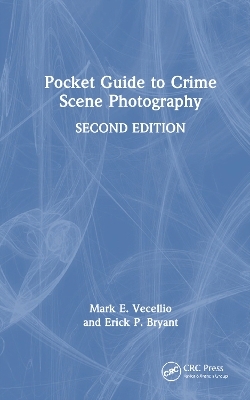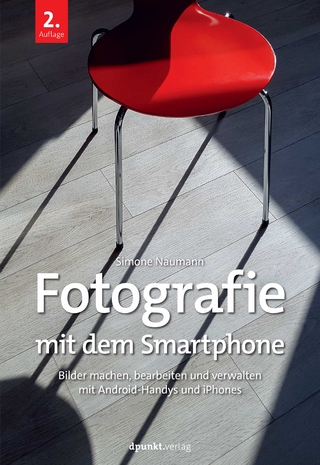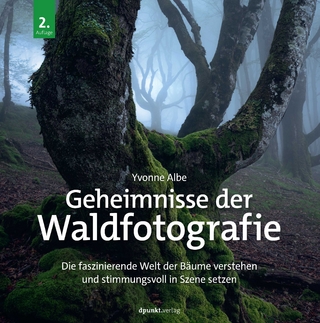
Pocket Guide to Crime Scene Photography
CRC Press (Verlag)
978-1-032-57659-6 (ISBN)
Unlike other resources on the topic that often contain overly complicated or rife with unnecessary or confusing technical jargon—this edition of Pocket Guide to Crime Scene Photography follows in the tradition of the first. The book is wholly updated, based on best practices and advances in camera technology to provide a practical, streamlined approach guide to the photographic documentation of crime scenes and physical evidence. The coverage includes extensive illustrations with two completely new chapters. The first focuses on specialized instructions for photographing shooting incident scenes, bloodstains, and evidence, made visible through infrared light; the is second dedicated to offering advice for photographing crime scenes and evidence with mobile device cameras.
Chapters distill the technical jargon and complex processes of photographing crime scenes and evidence into straightforward step-by-step descriptions. Pocket Guide to Crime Scene Photography, Second Edition has been designed in a smaller, handy trim size as a convenient, portable tool to help busy professionals. Its techniques include practical guidelines that can be immediately implemented by law enforcement personnel to maximize their time and improve their skills.
Features:
Provides an up-to-date, portable reference ideal for use in the field; includes full-color photographs throughout to illustrate key concepts
Details how to document various types of evidence, and crime scenes, using both standard and specialized techniques
Outlines visualization and photography of evidence—illuminated with alternative light sources—including visible wavelengths, UV, and infrared
Presents guidance for personnel who might only be able to use cell phone cameras for photographing evidence and scenes
Written by two experienced professionals who know the investigative and courtroom requirements for quality admissible photos.
Mark E. Vecellio is currently an assistant professor of Forensic Investigations at West Virginia University Institute of Technology, in Beckley, West Virginia. Mark has over a dozen years of teaching experience within higher education and managed the Crime Scene Investigations and Forensics Branch of the U.S. Army’s Criminal Investigation Division’s Special Agent Course. He holds a master’s degree in forensic science from George Washington University and a master’s degree in public administration/criminal justice from City University of Seattle. Mark has authored several research and technical publications within the field of forensic photography. Mark retired from the U.S. Army Criminal Investigation Command (CID), where he served as a special agent, supervisory special agent, and forensic sciences officer. Mark’s specializations, in addition to crime scene photography, include death investigations, crime scene reconstruction, and sexual assault investigations. Mark is a member of several forensic organizations. Erick P. Bryant currently serves as a crime scene analyst with the Colorado Bureau of Investigation. He previously served with the U.S. Army CID, where he retired as the chief of the policy branch at the U.S. Army CID headquarters in Quantico, Virginia. He holds a BS in political science from Georgia Southern University and a master’s degree in forensic science from George Washington University. He has expertise in the following forensic and investigative disciplines: crime scene investigation, analysis and reconstruction, forensic photography, bloodstain pattern analysis, criminal investigation, death investigation, sexual assault investigation, child abuse investigation, and interviews and interrogations. He has also served as an adjunct faculty member at several colleges and universities. He is a member of the American Academy of Forensic Science, the International Association of Identification (IAI), the Rocky Mountain Division of the IAI, and the Rocky Mountain Association of Bloodstain Pattern Analysts. He is certified with the IAI in both crime scene analysis and bloodstain pattern analysis.
1. Providing Context
2. Equipment and Accessories
3. Camera Terms and Photography Principles Made Easy to Understand
4. Crime Scene Photography: An Overview and Checklist
5. Overall Photographs
6. Mid-Range Photographs
7. Close-Up Photographs
8. Photographing Footwear/Tire Tracks, and Impressions
9. Photographing Latent Fingerprints
10. Night Photography/Painting with Light
11. Alternate Light Source Photography
12. Photographing Vehicles
13. Injury/Deceased Remains Photography
14. Tips for Photographing Bloodstain and Shooting Scene Evidence
15. Crime Scene Photography Using Mobile Devices
| Erscheinungsdatum | 01.04.2025 |
|---|---|
| Zusatzinfo | 190 Halftones, color; 2 Halftones, black and white; 190 Illustrations, color; 2 Illustrations, black and white |
| Verlagsort | London |
| Sprache | englisch |
| Maße | 138 x 216 mm |
| Gewicht | 530 g |
| Themenwelt | Kunst / Musik / Theater ► Fotokunst |
| Sachbuch/Ratgeber ► Freizeit / Hobby ► Fotografieren / Filmen | |
| Recht / Steuern ► EU / Internationales Recht | |
| Recht / Steuern ► Privatrecht / Bürgerliches Recht ► Zivilverfahrensrecht | |
| Recht / Steuern ► Strafrecht ► Kriminologie | |
| Sozialwissenschaften ► Soziologie | |
| ISBN-10 | 1-032-57659-6 / 1032576596 |
| ISBN-13 | 978-1-032-57659-6 / 9781032576596 |
| Zustand | Neuware |
| Informationen gemäß Produktsicherheitsverordnung (GPSR) | |
| Haben Sie eine Frage zum Produkt? |
aus dem Bereich


